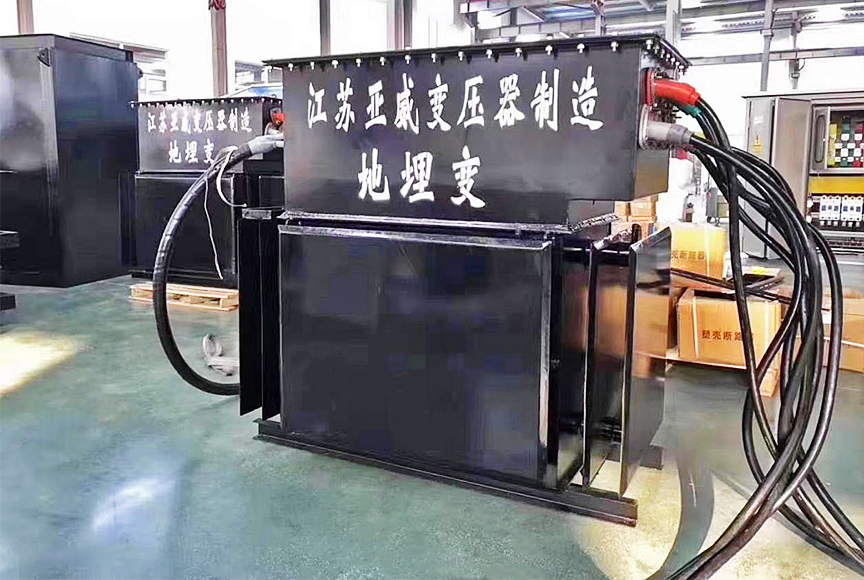- E-mail: admin@yaweitransformer.cn
- Tel: +86-18862719076
There are many and complex reasons for transformer internal faults and accidents caused by transformer outlet short circuit, which are related to structural design, raw material quality, process level, operating conditions and other factors, but the selection of electromagnetic wire is the key. From the dissecting transformer in recent years, the analysis of its accidents shows that there are roughly the following reasons related to electromagnetic lines.
1, based on the static theory of transformer design and the selection of electromagnetic lines, and the actual operation of the electromagnetic line stress difference is large.
2, at present, the calculation program of each manufacturer is based on the uniform distribution of leakage magnetic field, the same turn diameter, equal phase of the force and other idealized model, and in fact, the transformer leakage magnetic field is not uniform distribution, in the yoke part is relatively concentrated, the electromagnetic line in the area by the mechanical force is also large; The climbing of the transposition wire will change the direction of force transmission at the transposition point and produce torque; Due to the factor of the elastic modulus of the pad, the axial pad is not evenly spaced, which will cause the alternating force generated by the alternating leakage magnetic field to delay resonance, which is also the fundamental reason why the wire cake in the core yoke, the transposition place, and the corresponding part of the pressure regulation tap to deform at the beginning.
3. The influence of temperature on the bending and tensile strength of the electromagnetic wire is not considered when the short-circuit resistance is calculated. The anti-short circuit capability designed at normal temperature can not reflect the actual operation. According to the test results, the temperature of the electromagnetic wire has no effect on its yield limit. With the increase of the temperature of the electromagnetic line, its bending strength, tensile strength and elongation are reduced, and the bending tensile strength at 250℃ is reduced by more than 10% compared with that at 50℃, and the elongation is reduced by more than 40%. In the actual operation of the transformer, under the rated load, the average winding temperature can reach 105℃, and the hot spot temperature can reach 118℃. General transformer operation has a reclosing process, so if the short circuit point can not disappear for a while, it will bear the second short circuit impact in a very short period of time (0.8s), but due to the impact of di a short circuit current, the winding temperature increases sharply, according to the provisions of GBl094, the high allowable 250℃. At this time, the anti-short-circuit ability of the winding has been greatly reduced, which is why short circuit accidents occur after transformer reclosing.
4, the use of ordinary transposition wire, poor mechanical strength, prone to deformation, loose strands, copper exposure when subjected to short-circuit mechanical force. When the ordinary transposition wire is used, due to the large current and the steep climb of transposition, this part will produce a large torque. At the same time, the wire cake at the two ends of the winding will also produce a large torque due to the joint action of the amplitude and axial leakage magnetic field, resulting in distortion. For example, the A-phase common winding of Yanggao 500kV transformer has A total of 71 transpositions, due to the use of thicker ordinary transposition wires, of which 66 transpositions have varying degrees of deformation. In addition, the Wujing 1l main transformer is also due to the use of ordinary transposition wires, and the two ends of the high voltage winding at the core yoke part have different flipping and exposing phenomena.
5, the use of flexible wire, is also one of the main reasons for the transformer’s poor short-circuit resistance. Due to the lack of early understanding of this, or winding equipment and process difficulties, manufacturers are reluctant to use semi-hard wires or design without this requirement, from the fault transformer point of view are soft wires.
6. The winding is loose, the transposition or the correction climb is handled improperly, and the electromagnetic line is too thin, resulting in hanging. From the point of view of the accident damage location, the deformation is more common in the transposition, especially the transposition of the transposition wire.
7. The winding turns or wires are not cured, and the short-circuit resistance is poor. None of the early lacquered windings were damaged.
8. Improper control of the preload force of the winding causes the wires of the ordinary transposition wires to be misaligned with each other.
9, the suit gap is too large, resulting in insufficient support on the electromagnetic line, which increases the potential danger to the transformer’s short-circuit resistance.
10, the action in each winding or each file preload is not uniform, short-circuit impact caused by the pulse of the wire cake, resulting in excessive bending stress on the electromagnetic line deformation.
11, the external short-circuit accident is frequent, the accumulation effect of electric power after multiple short-circuit current impact causes the electromagnetic line to soften or internal relative displacement, and eventually leads to insulation breakdown.
